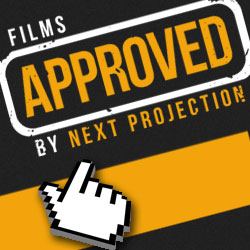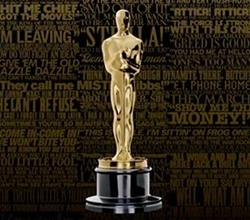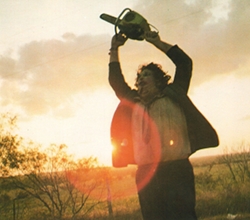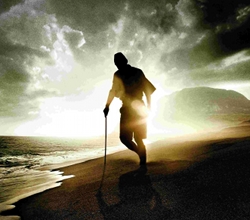Top Ten: Musicals
Fervently embracing the unrealistic (who actually breaks out into spontaneous song?), the movie musical has had a wide-ranging history and major rises and declines. Once the undisputed champion of Hollywood’s league of popular genres, the musical’s stock began to wane with new tastes in popular music and entertainment taking hold during the 1960s and 1970s. Since then, its fortunes have varied wildly, with animated films and adaptations of stage shows staying relatively commercial. That’s not to mention the constantly robust Indian cinema industry, where musicals have always been (and by all accounts, always will be) the most popular genre of all. This week’s Top Ten Tuesday takes a look at the Top Ten Musicals.
>> Readers’ Selections
1. Singin’ in the Rain (1952)
2. Top Hat (1935)
3. The Wizard of Oz (1939)
4. West Side Story (1961)
5. Cabaret (1972)
6. The Sound of Music (1965)
7. The Rocky Horror Picture Show (1975)
8. An American in Paris (1951)
9. Moulin Rouge! (2001)
10. 42nd Street (1933)
>> Adam’s Selections
1. Singin’ in the Rain (1952)
A rare example of the conventional choice being the correct one, Singin’ in the Rain has been hailed as a perennial Hollywood classic for decades, despite its initially lackluster box-office. Filled with preexisting songs iconically reconfigured (who hears the title song without picturing Gene Kelly traipsing in puddles or, alternately, Malcolm McDowell perpetrating some of the ol’ ultra-violence?), the film highlights the messy transition from silents to talkies necessitated by the success of The Jazz Singer. This narrative gives ample opportunity for portraying the movies’ precursor, the stage; Busby Berkeley-like production numbers; painfully hilarious rehearsals and struggles to incorporate sound; and a full-figured satire on Hollywood itself. So many numbers remain timeless, from the title romp to Donald O’Connor’s nearly superhuman routine “Make ‘Em Laugh,” and Jean Hagen’s Lina Lamont is still the benchmark for squeaky-voiced dumb blondes. Few films are as deliriously entertaining and good-natured as this one.
2. The Young Girls of Rochefort (1967)
The follow-up to his equally affecting, literally all-singing Umbrellas of Cherbourg, Jacques Demy’s Young Girls of Rochefort is a tireless mix of ebullience and missed opportunity, crisscrossing fates centered on the seaside town of Rochefort. Sisters Delphine and Solange (real-life sisters Catherine Deneuve and Françoise Dorléac) are a ballet teacher and music teacher, respectively, whose romantic ideals hope to lead to life in the larger realm of Paris. As colorful and optimistic as the classic American musicals it emulates, Rochefort nonetheless integrates a particularly French sense of nostalgia and thwarted desire to the complicated goings-on that frequently converge on the sisters’ mother’s café in the middle of town. The film makes the case that musical fantasy, frequently misunderstood or misidentified though it may be, is a part of life, one that enhances possibilities for the young and old alike. Gene Kelly in particular, a performer Demy courted specifically, imbues his scenes with a boost of hoofing elation, alive to the vigor that musicality can bring to bear on the encroaching enervation of everyday life.
3. A Hard Day’s Night (1964)
Dubbed the “Citizen Kane of jukebox movies” by Andrew Sarris, A Hard Day’s Night is among the most purely joyous films, musical or otherwise, of its era. Equally informed by the free-for-all playfulness of director Richard Lester’s style and the Beatles’ complementary personalities, it updates the backstage, let’s-put-on-a-show musical template by portraying the Fab Four rehearsing for a TV appearance. Traditional formalized dance numbers are replaced by chases, gags, and goof-offs, a pattern developed in such early semi-musicals as Hellzapoppin’ and exemplified in the rock ‘n’ roll musical films of the mid-1950s; what separate A Hard Day’s Night from those precursors are a jazzy, modernist craft and the sheer buoyancy of the Beatles’ timeless songs. The filmmaker and group would reunite for a less successful but still entertaining follow-up, Help!, and such imaginative later films as Yellow Submarine and Across the Universe would utilize the music to good effect.
4. Gentlemen Prefer Blondes (1953)
The electrifying one-two punch of Marilyn Monroe and Jane Russell, bedecked in sparkling, spangled red, opens Howard Hawks’ satiric, rambunctiously colorful Gentlemen Prefer Blondes. Based on an earlier novel and Broadway musical, Gentlemen is a visual feast of comedy, sex, and materialism, with the two showgirl leads enticing rich men of all types with their feminine wiles. Monroe is justly remembered for her dumb blonde act as jubilant, gold-digging Lorelei Lee, especially when performing the iconic “Diamonds are a Girl’s Best Friend”; but Russell is equally impressive as the more down-to-earth, classy corrective brunette Dorothy. Norman Mailer noted that “Never have two women gotten along together so well in a musical,” and their genuine friendship on- and off-stage, as both actresses and characters, cement the feminine bond that complicates any reading of the film as either merely materialistic or simply feminist, instead ranging between two distinct personalities in harmony that run roughshod over the hilarious male fuddy-duddies in their collective path.
5. Swing Time (1936)
At least one Astaire and Rogers musical deserves a place in anyone’s top ten list; selection of such a choice among the four or five of the most outstanding of their ten collaborations usually comes down to mere personal preference. For my money, several of their routines in Swing Time are magnificent and stand as some of the best ever put on film by anyone: the impossibly effortless, practically one-take “Waltz in Swing Time”; the polka-inflected “Pick Yourself Up,” in which Ginger warms to Fred’s sheer precocious talent after a complicated misunderstanding; and the melancholy-tinged, elegant climactic medley of “Never Gonna Dance,” “The Way You Look Tonight,” and reprises of “Waltz” and “Dance,” a devastating sequence of sonic and visual emotion actualized by a voice and two bodies’ movements. If the plot is insubstantial even in comparison to those of their other efforts, the song-and-dance numbers, which are to musicals as explosions and car chases are to action movies, more than make up in their brilliance and grace.
6. Under the Roofs of Paris (1930)
René Clair was the master of the early French sound film, constructing imaginative musicals with the still-new technology. Under the Roofs of Paris was his earliest worldwide success, an atmospheric slice of poetic realism that merged the still-considerable visual possibilities of the silent film with bursts of the title song, first taught to a crowd by Albert Préjean’s street singer protagonist and later emanating from the tenants of the nearby apartment building. The romantic tale of a lower-class love triangle also encompasses violence, crime, and jealousy, dark tinges that make the snatches of song even more buoyant in comparison. Clair’s other musicals of the time, including À Nous la Liberté and Le Million, are also highly recommended for their groundbreaking and inventive early uses of sound in a musical-comedy idiom.
7. Up, Down, Fragile (1995)
Jacques Rivette’s amiable pseudo-musical plays up Paris’s inherently otherworldly romantic atmosphere while eschewing the traditional polish and professionalism of the Hollywood (especially MGM) musical. Interlocking stories about three young women “dance” around each other in this almost 3-hour film, alternately exuding romance, solidarity, and self-discovery. While the music may frequently be non-diegetic, the dance sequences (the first of which takes about an hour to appear) come wholly naturally, as solos or pair dances; part of the still-energizing delight in much of Up, Down, Fragile comes from its lack of professional choreography and the overwhelming sense that anyone anywhere with the suitable, human-level emotions is capable of starring in their own dance number. Rivette, a former film critic before becoming an indefatigable director, immerses his film in the spirit if not the letter of lower-cost but nonetheless glossy movie musicals of the 1950s, transplanting to Paris the glimmer of possibility that a song and a few steps can generate.
8. Pyaasa (1957)
The expansive Indian film industry is still a major blind spot of mine, but Guru Dutt’s melodramatic musical Pyaasa will probably remain a personal favorite no matter how many Bollywood films I see. The writer-director plays a struggling poet who falls for a hooker with a heart of gold (Waheeda Rehman) enamored of his poetry. A convoluted series of events results, involving a former lover of Dutt’s, her publisher husband, and an accident involving a beggar wearing Dutt’s coat filled with poems whom Dutt tries to save from an oncoming train and is posthumously celebrated as the writer of Dutt’s discovered work. Suffused with magnificent, romantically sung poetry, the film thereafter delves into Dutt trying to make himself known to his friends and new admirers, finally realizing the greed and hypocrisy that await him. Much less about choreography and dance than other Bollywood hits, Pyaasa instead focuses on the song as a vehicle for poetic romanticism in the age of capitalist co-option.
9. Pennies from Heaven (1981)
On one level, this richly cynical anti-musical indicts the traditional form for its unrealistic death-grip on American hopes and dreams; yet there’s undeniable grace and beauty to be found in the popular songs and dance routines that populate the late Depression-era milieu of Pennies from Heaven. Steve Martin plays against his wild-and-crazy guy type as a traveling sheet music salesman struggling to make his quotidian world fit into the movie musical genre with increasingly dire and tawdry results. The now Grand Dame of Broadway, Bernadette Peters, is a schoolteacher who gets high on his unchecked ambitions. The musical numbers intrude on real life but are emotionally seamless; perhaps most indelibly, Peters pictures scuzzy and straight-talking pimp Christopher Walken doing an energetic striptease to “Let’s Misbehave,” and Martin and Peters reenact an Astaire and Rogers routine in miniature in front of a massive projection, encapsulating their messy quest to merge fantasy and reality.
10. Once (2007)
As warm and inviting as a fireplace-lit den after a cold journey, the Irish musical Once is a gentle romance between a street musician and flower seller over music and vacuum cleaners. Markéta Irglová and Glen Hansard play the couple, nonprofessional actors both although Hansard had previously played the guitarist in The Commitments, an unfortunate slight of mine in this list of movie musicals. Their unhurried romantic courtship parallels their musical evolution as well, much of the film concerning their nonstop songwriting together and attempts to record. Part modern backstage musical chronicling the creation of a demo, part naturalistic meet-cute, the film benefits from an unhurried pace and full-length performances of plausibly earnest songs co-written by the leads, professional musicians who performed together before and after the film’s shooting and were briefly even a couple in real life. Its low-key and unrequited atmosphere put into relief the flashy emptiness of so many modern musicals.
-
http://twitter.com/NextProjection Christopher Misch
-
Anonymous
-
Franchesca
-
Franchesca
-
Fulmer
-
Anonymous













 Review: We Need To Talk About Kevin (2011)
Review: We Need To Talk About Kevin (2011) Review: The Artist (2011)
Review: The Artist (2011) Review: Like Crazy (2011)
Review: Like Crazy (2011) Review: Paranormal Activity 3 (2011)
Review: Paranormal Activity 3 (2011) Review: Take Shelter (2011)
Review: Take Shelter (2011)






